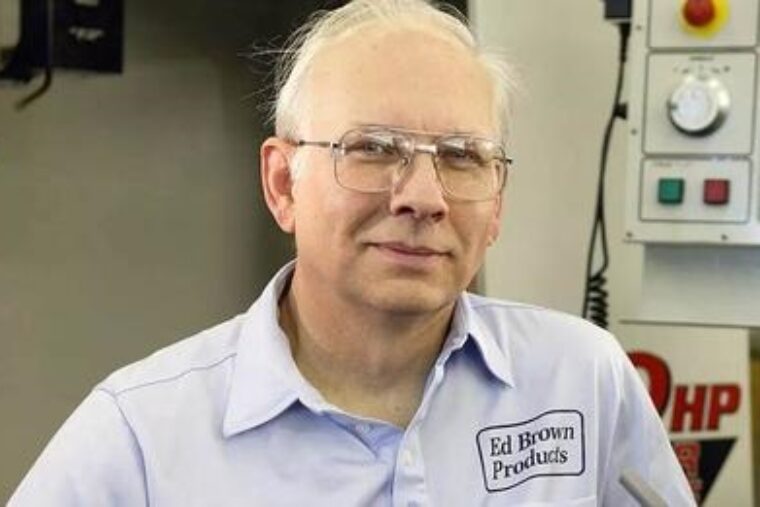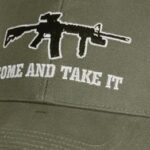A legend. RIP.
The night of September 14, William Edward Brown passed away. Newer shooters might only know of him from his family company, Ed Brown Custom. But pretty much every time you pick up a 1911 that has more done to it than a World War II-era parts set, or a vanilla-plain Series 70, you can thank Ed. He started as a machinist; no, he started as a precision machinist, a tool and die maker. Those who cut metal are commonly a touchy lot, as making things to exact standards isn’t easy. Making them perfectly to a standard is akin to an art-form, and that’s what tool and die makers do. In addition to working as a tool and die maker, he had his own gun shop, as many of us back then did. Ed began shooting IPSC in the late 1970s, and in the early years he was like many of us, working hard to improve his skills, and not entirely happy with the quality of parts to be had. Despite the lack of readily available better parts, he made his way into the Top 16 at the IPSC World Shoot in 1983, and even at that early date, it was a difficult and stellar accomplishment. Still, the lack of parts was something he felt needed to be addressed, so in the late 1980s he quit his job and began making 1911 parts full time. His initial lineup was three parts, the three parts we all fussed over the most back then: a grip safety, a mag well and a hammer.
If you look at a custom or even semi-custom 1911 today, and note how high on the frame you can get your hand, thank Ed. His design was revolutionary, and it quickly became the default grip safety on IPSC ranges. The mag funnel sped reloads, and the hammer made improving the trigger pull an easy task. The one that really caught my attention was his thumb safety. Before the Ed Brown thumb safety, there had been many attempts to make the vanishingly small GI safety, and the later Series 70 safety, better. But it was Ed Brown who made the lever ergonomic, and his fit my hand like no other. It, too, quickly became the default, so much so that its geometry, like the grip safety, was copied over and over. As I mentioned, tool and die makers can be a touchy lot. They make the tooling that other machinists then use to make stuff, and there is no such thing as “close enough” in the tool and die industry. Some found Ed to be a bit brusque or off-putting, but I never did. When I first encountered him at one of the USPSA Nationals held at the PASA range in Quincy, he was more than happy to talk pistolsmithing. I wasn’t a famous gun writer then, and I wasn’t in danger of making the Top 16 in the match (I did later) but I did know how to fit parts, what mattered in function, and we got along well. How good a pistolsmith was Ed Brown? Good enough to have been awarded “Pistolsmith of the Year” by the American Pistolsmith Guild in 1991. In the course of time, Ed made more and more parts for 1911s, until he almost had enough to make a pistol. By then, he also had two grown sons, and they expanded the company to produce custom-built 1911s using all parts made by Ed Brown Custom.
The Ed Brown Custom line did not encompass pages and pages of models. They focused on making a few models to absolute precision, accuracy and classic looks. I’ve had the pleasure of testing and reviewing Ed Brown Custom 1911s, and the later M&Ps, and at no time did I ever find something to criticize. Ed and his sons Travis and Wade did not stop adding to the lineup, and innovating. The classic method of providing a non-slip grip was to checker the frame. Using precision CNC machining, they created the Snakeskin pattern, scales machined from the steel of the frame to make a non-slip grip. Ed also designed the Bobtail, a change in the curve of the mainspring housing that made an everyday carry 1911 less likely to print when carried. As if that wasn’t enough, Ed also delved into the bolt-action rifle arena. And just in case you weren’t a 1911 fan, you could count on Ed Brown Custom to provide you with a much better barrel for your Glock, as well as a slew of upgraded parts for your S&W M&P. Ed stepped down from running the company in 2010, leaving that task to his sons. William Edward Brown is a classic American story. Starting with the skills he developed, he recognized a need, and filled the gap left by others. He built it into a business that employs his family and a crew of others and is known and respected in the firearms industry. We should all live such lives.
By Patrick Sweeney



